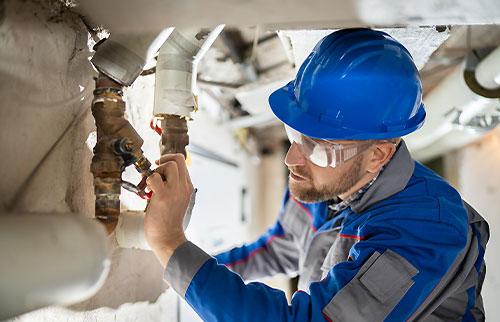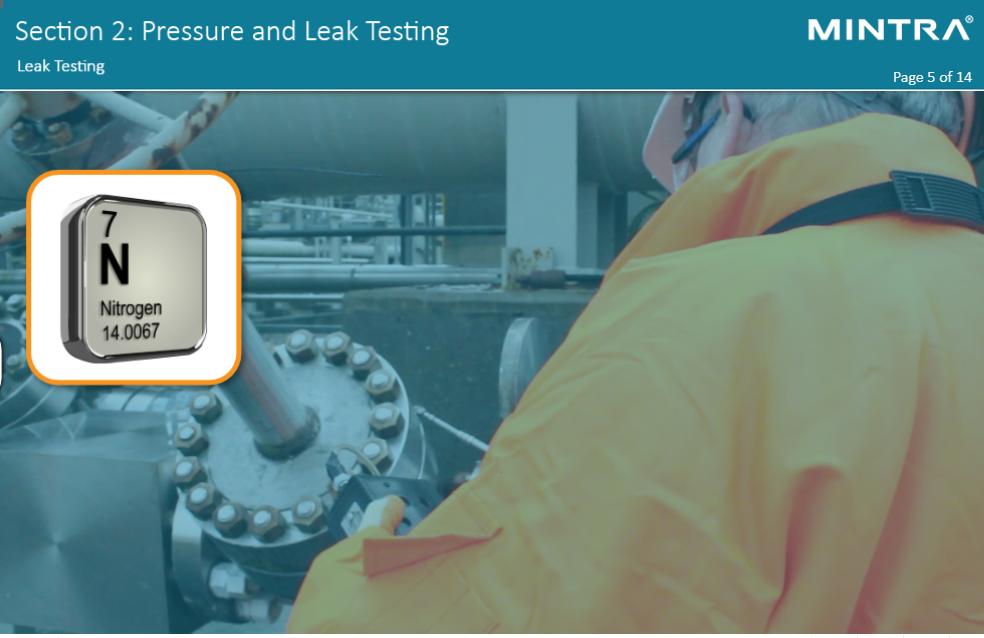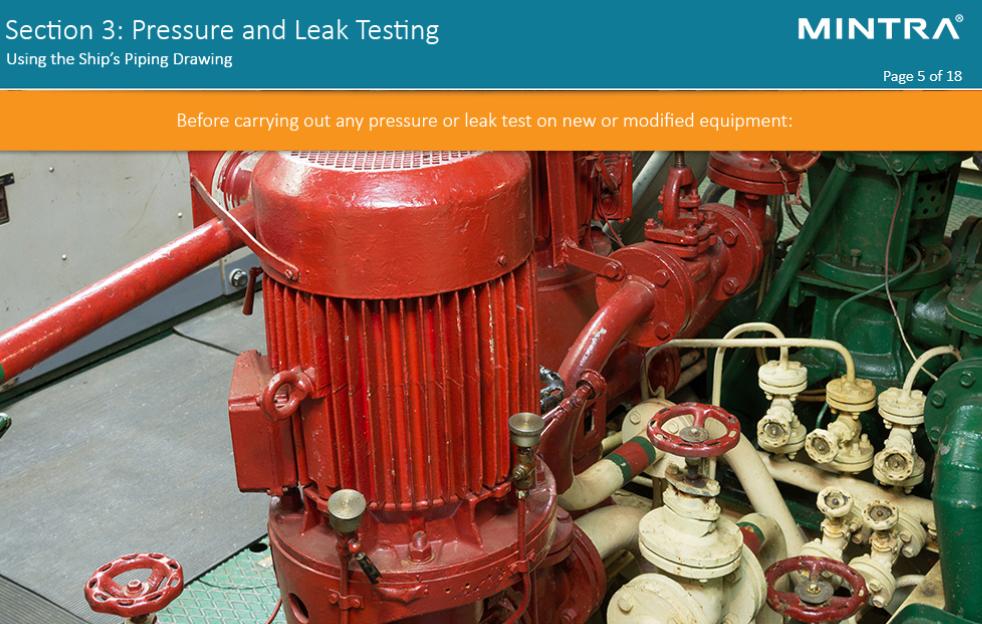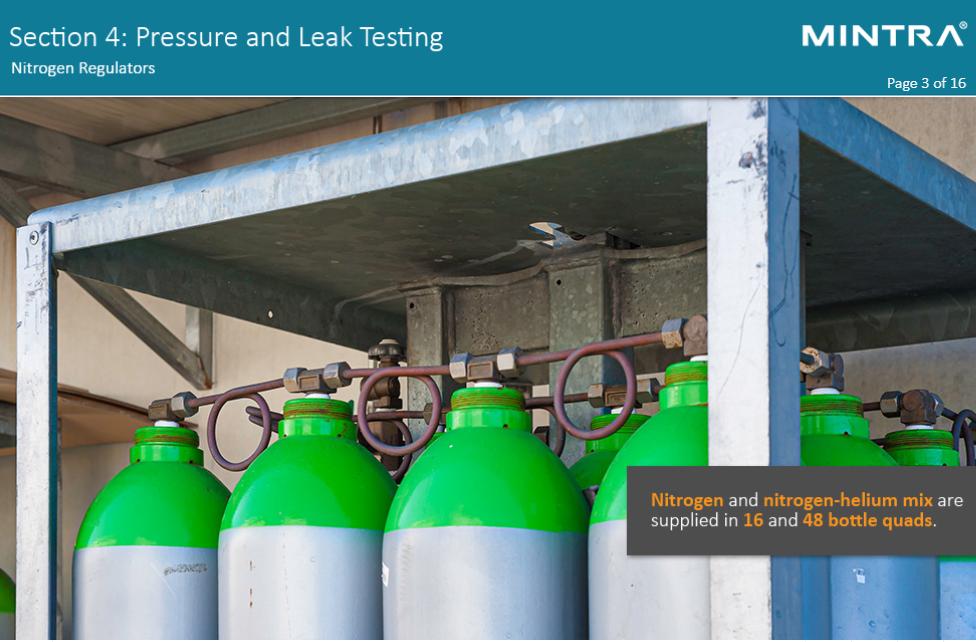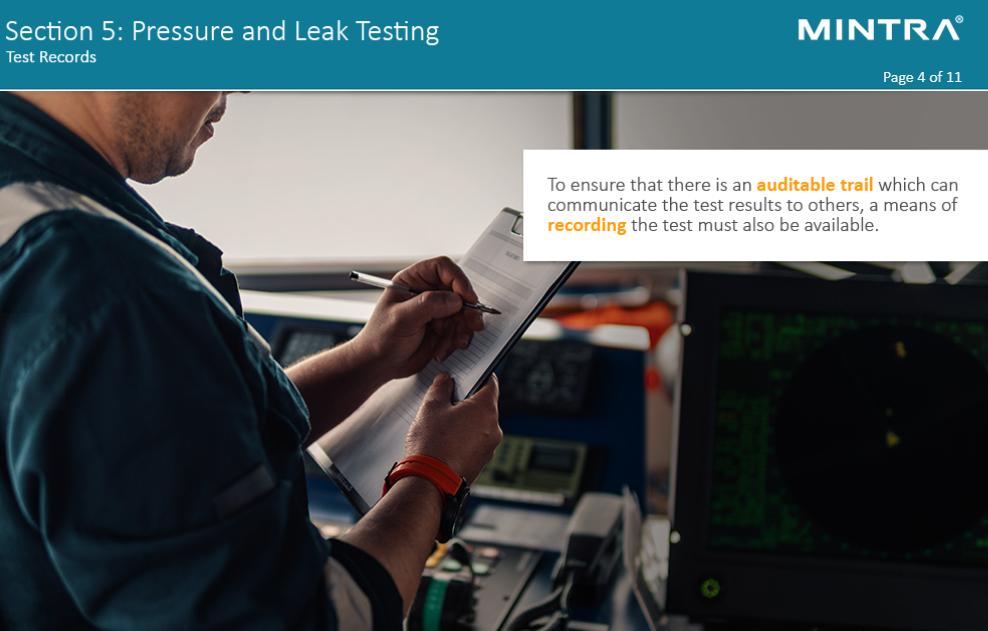Buy and assign to
multiple learners
Instant access
via email link
Instant certificate
via email
Further Information - Pressure Testing & Leak Testing (Maritime) Training
Description
Course Goal:
This Pressure Testing & Leak Testing (Maritime) Training course is designed to ensure that the safety aspects of pressure testing and leak testing are known.
Who is the course for?
Engineers of all grades.
Is previous experience required?
No previous experience is required.
How will the course benefit me?
To ensure that the safety aspects of pressure testing and leak testing are known.
How will the course benefit my company?
To reduce possible pressure testing and leak testing safety-related incidents.
What standards are referenced in the course?
n/a
Is there an assessment?
End of course assessment with a % pass mark.
Learning Objectives
Section 1: Introduction to Pressure and Leak Testing (5 minutes)
This section will introduce the learner to the course and will emphasise the importance of leak testing of disturbed joints on normally pressurised systems prior to returning to service.
• Define what is meant by a leak test
• Define what is meant by a pressure test
• Outline the role of the leak tester and the general requirements for leak/pressure testing
• Identify examples of systems that require to be pressure or leak tested
• Give an overview of the dangers of nitrogen and working in oxygen deficient atmospheres
Section 2: Leak Testing and Pressure Testing Methods and Associated Hazards (10 minutes)
This section will discuss the various methods of leak testing, and pressure testing of vessels and pipework, and will also consider the hazards associated with hydrostatic and pneumatic testing.
• Explain proof testing and strength testing of pressure vessels and pipework
• Identify examples of the various methods of pressure/leak testing
• Explain the differences and risks using water as a test medium compared to using pressurised inert gas
Section 3: Preparing a Leak Test (15 Minutes)
This section will provide information on planning a leak test, the use of the ship’s piping drawings, valve line-up checklists and task risk assessment.
• Give an overview of flange tags and disturbed flange management
• Outline how to plan a leak test
• Explain how to use the ship’s piping drawings for planning purposes
• Explain how to use valve line-up checklists
• Explain the use of task risk assessments prior to leak testing
Section 4: Carrying out a Leak Test (15 minutes)
This section will discuss the practicalities of leak testing on site, the safety precautions required, and how pressure is applied incrementally.
• Identify the equipment required for leak testing
• Explain the use of helium as a trace gas
• Describe how to use the HeliTest unit
• Describe the operation of an intensifier pump
Section 5: Test Pressure and Test Documentation (15 minutes)
This section will consider test pressures and how these are controlled below design pressure, in addition to discussing the compilation of test documentation prior to handover to normal operations.
• Describe line specifications and their use in identifying design pressures
• Identify PSV ratings
• Identify examples of test documentation
Section 6: Accumulator Charging
• Explain the role of hydraulic accumulators
Assessment
End of course assessment with a % pass mark.
System Requirements
• Internet access - users will need a device with a web browser and internet connection
• System - runs on computers, tablets and mobile devices using Windows 7 and above and MAC OS devices running IOS 11 and above
• Browsers - Edge, Chrome, Firefox and Safari
• Minimum browser size - none
• Audio - requires device speaker or headphones
Recommended Courses
Reviews
Insights & News
At Mintra, we're so much more than just a team—we're a force driving innovation and excellence in maritime training across Europe.
We’re excited to be taking the stage at one of Europe’s leading showcases of organisational learning.
We are delighted to share the exciting news that our People and Culture team has been shortlisted for the prestigious cHeRries Awards!
